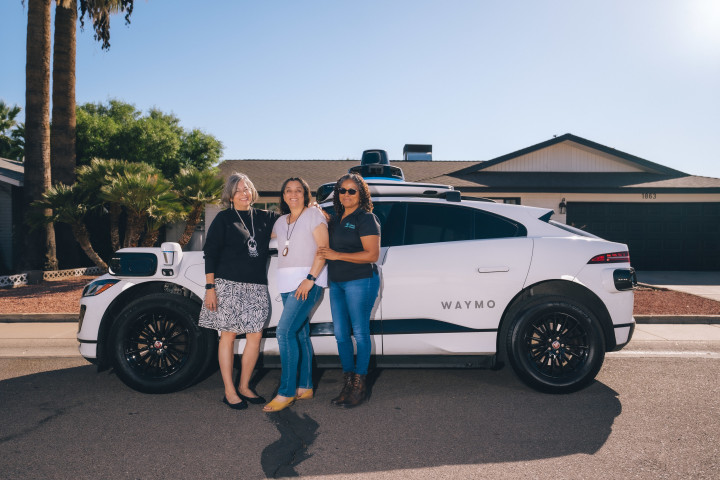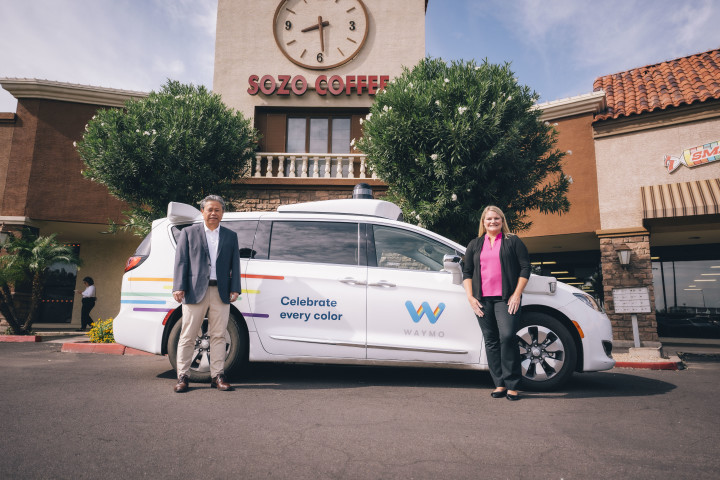Waymo’s Autonomous Vehicles Could Be a “Game Changer” Says National Federation of the Blind
Play VideoRead
National Federation of the Blind
It was a sunny day in San Francisco when Mark Riccobono and Anil Lewis hopped into a vehicle for a trip across town.
“Just riding around on a beautiful San Francisco day,” Mark says.
But for Mark and Anil, it was more than just a car trip. It was an act of resilience and claiming their autonomy.
Mark and Anil, both people who are legally blind, were able to take a car ride by themselves for the first time with Waymo One, a ride-hailing service in San Francisco which is powered by Waymo’s fully autonomous driving technology.
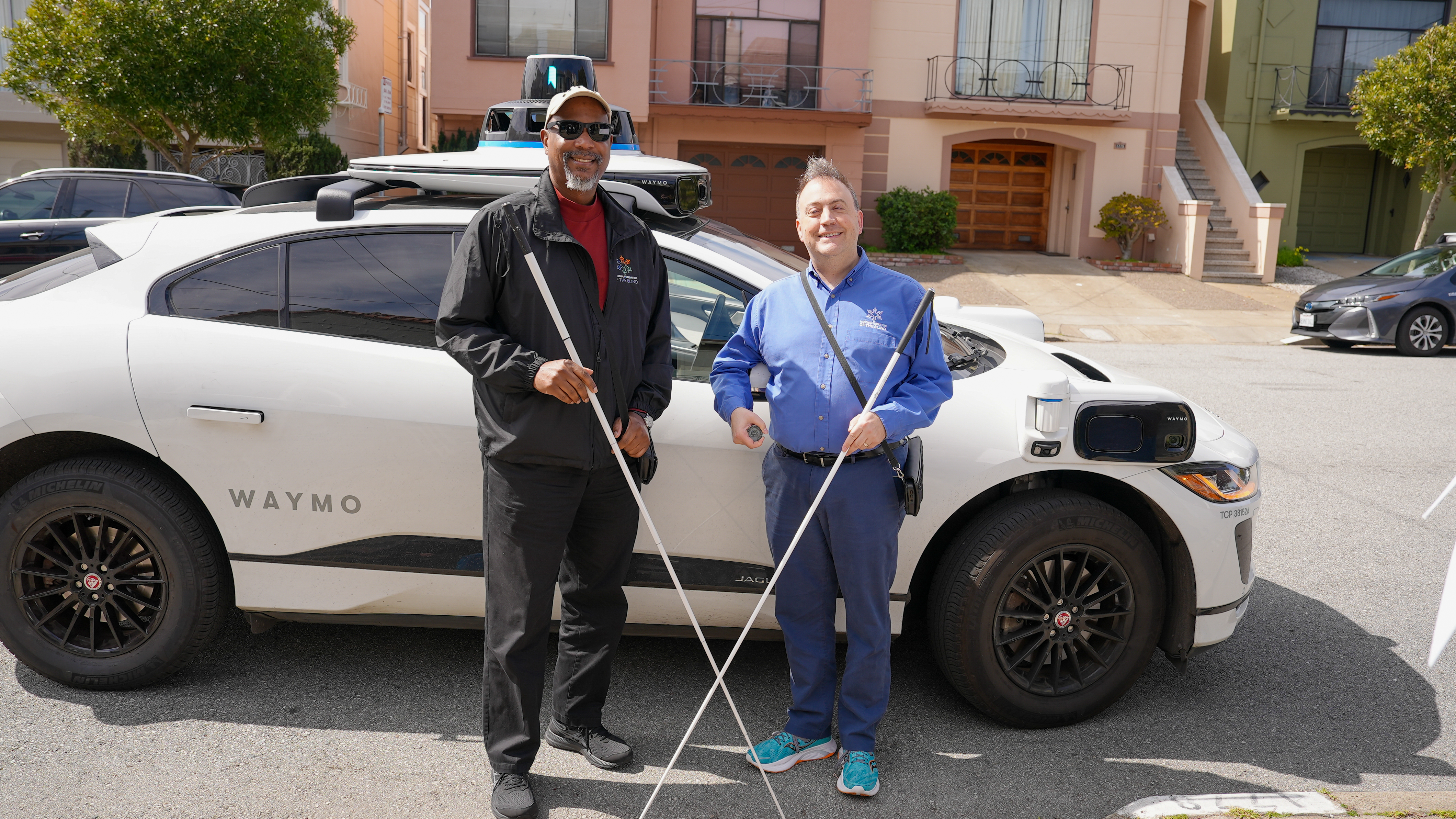
“As blind people… we get the message that someone else is in charge of our freedom of movement,” says Mark, who serves as the President of the National Federation of the Blind (NFB). “And what we try to do in the National Federation of the Blind is counteract that.”
Founded in 1940, the National Federation of the Blind is an American membership and Civil Rights organization bringing together blind people nationwide to impact change in society.
“This technology and the work that Waymo's doing, it’s the first time in human history that a blind person will be able to travel significant long distances independently,” Mark underscores.
This technology and the work that Waymo's doing, it’s the first time in human history that a blind person will be able to travel significant long distances independently.
The National Federation of the Blind and Waymo are partnering to include the feedback and suggestions of people who are blind in the development of Waymo’s autonomous driving technology.
Through its collaboration and partnership with advocates for people with disabilities, Waymo has added accessibility features that let people receive added navigation details about their trip via audio, find their vehicle by sound, and more.
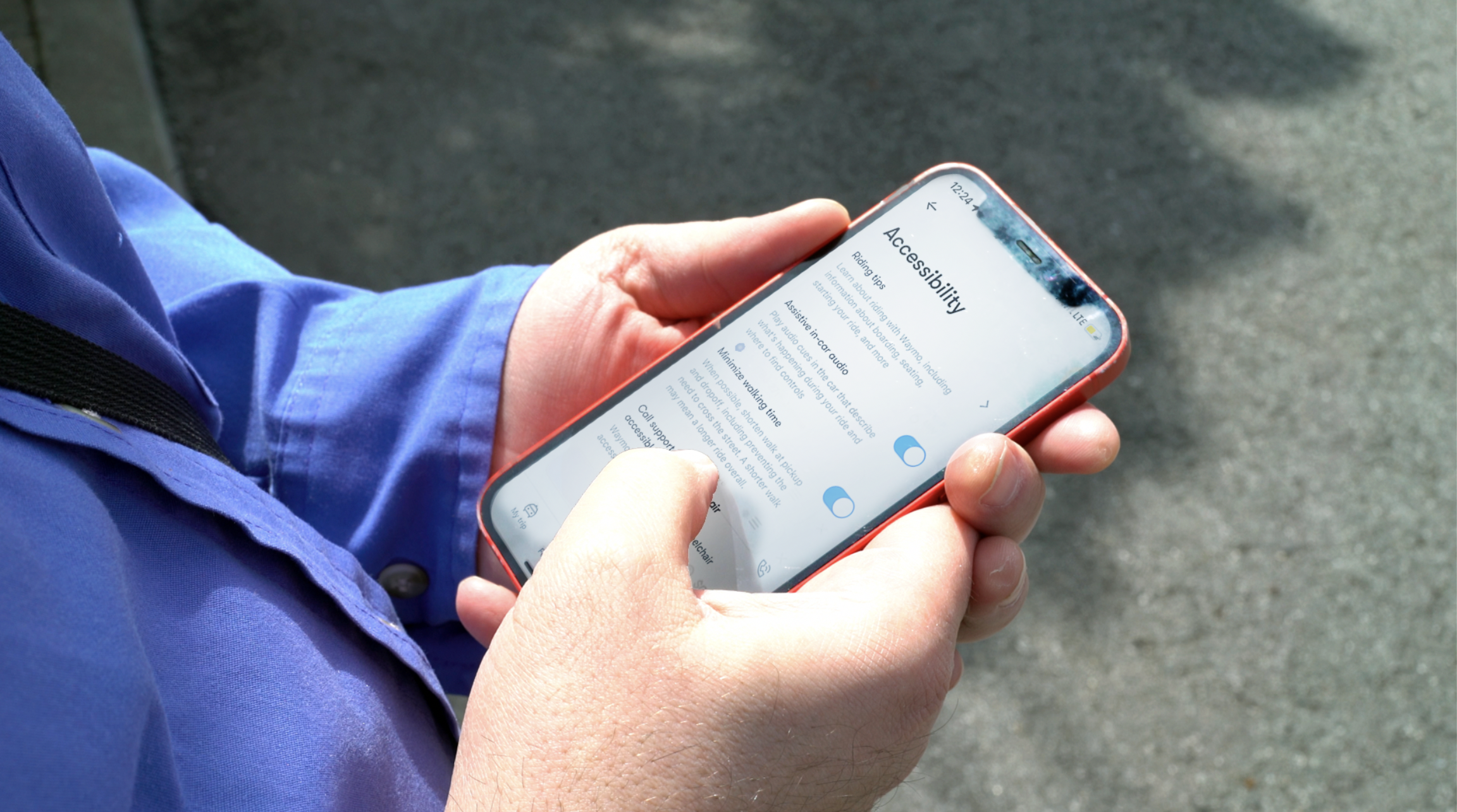
Waymo’s work with NFB and other advocates for people with disabilities has been recognized by the U.S. Department of Transportation.
“When it picked us up, it was like within a foot of the curb. It parked better than most people I know that drive,” says Anil, the Executive Director of Blindness Initiatives for NFB. “I think that this is really going to be a game changer.”
Anil also notes how Waymo conscientiously approaches stop signs. Mark says he appreciates how the vehicle announces every turn and riders can track where they are on a trip.
“I've certainly never had a ride share as smooth as this ride,” Mark says.
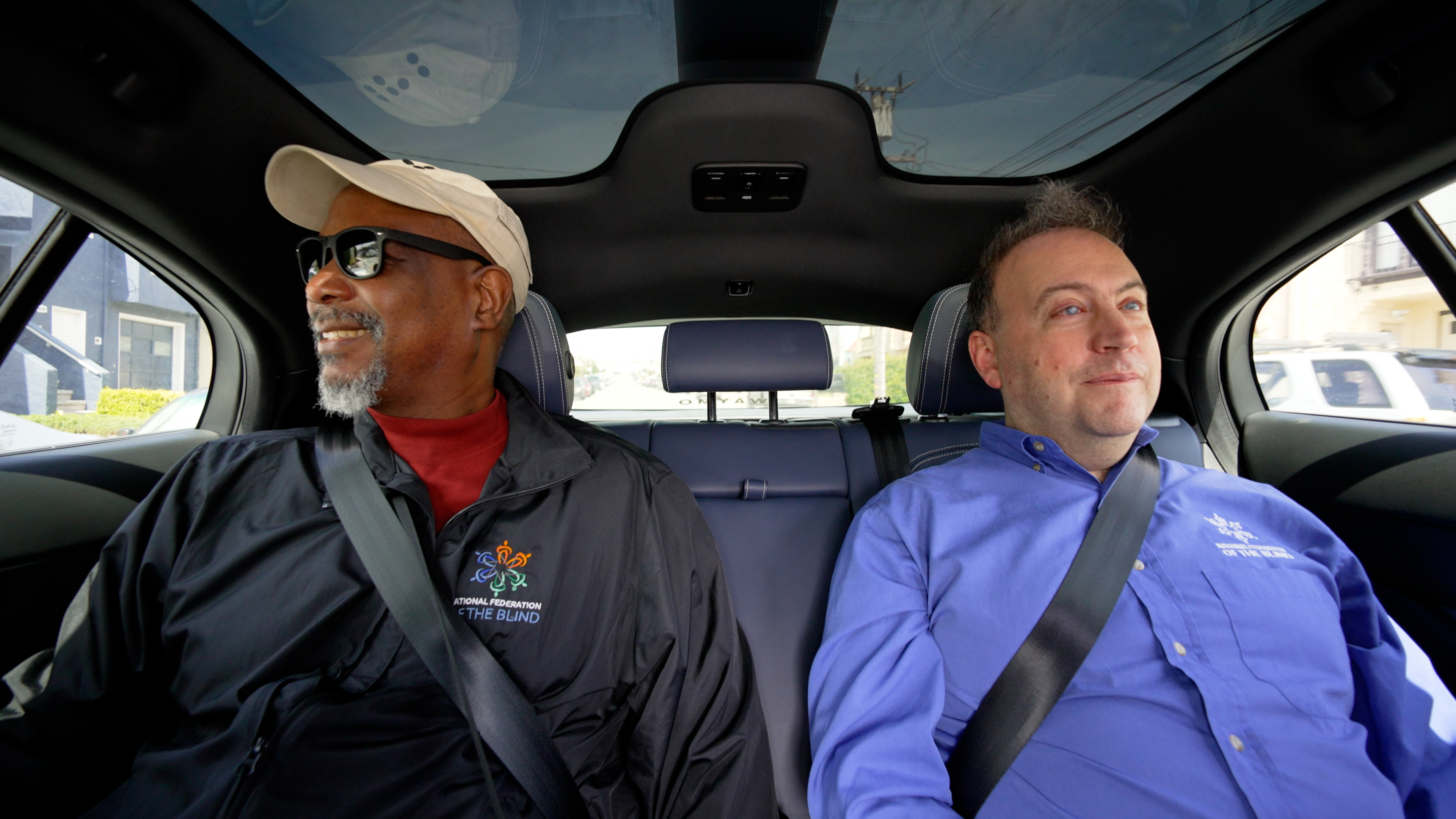
Anil says he is excited about how Waymo’s technology can give people who are blind or who have low vision the ability to get from point A to point B without relying on others, along with having a degree of consistency that provides a sense of safety, confidence, and security.
“This is my first real autonomous experience, no one but Mark and I in the car… we are in awe of the potential that this offers, pleased that we've made this particular progress, extremely happy to be partnering with Waymo toward this effort,” says Anil.
This is my first real autonomous experience, no one but Mark and I in the car… we are in awe of the potential that this offers, pleased that we've made this particular progress, extremely happy to be partnering with Waymo toward this effort.
Mark says that people who are blind or who have low vision can contribute valuable insights to the development of technologies, if they are included.
"Blind people have to be part of this from the beginning … because the experience will be better for everybody,” Marc emphasizes. “Waymo, in particular, understands and values the fact that we have something to contribute and Waymo has something to contribute, and that makes it a true partnership.”
Anil lost his sight when he was 25, and says that giving up driving was probably one of the hardest things he had to do. With autonomous driving technology like Waymo’s, he believes people who are blind or who have low vision will be able to get around independently without relying on anyone else.
“In the case of the Waymo and National Federation of the Blind collaboration, I would say that through love, hope, determination, and collaboration, we can transform dreams into reality because tens of thousands of blind people have dreamt of driving for ages,” says Anil.
Anil says people who are blind or who have low vision not only have something to gain from new technologies like Waymo’s, but valuable perspectives to contribute.
“We leave our homes every day to live in a world that's not designed for blind people, so we have to be strategic and very creative, we have to solve problems in very unique ways, and we develop a unique set of problem-solving skills,” says Anil. “We're adding value by looking at the world from a different lens than everybody else does.”
We leave our homes every day to live in a world that's not designed for blind people, so we have to be strategic and very creative... We're adding value by looking at the world from a different lens than everybody else does.
Together with partners like NFB, Waymo is bringing together advocates across the country to scale up the inclusion of people with disabilities in mobility technology design through the Waymo Accessibility Network.
Anil urged people to try Waymo’s autonomous driving technology for themselves.
“It's interesting how some people are still a little bit nervous about the concept, but once they get a chance to experience it, it's going to shift the paradigm,” Anil says.
Mark agrees.
“I think the only way people are really going to understand it and believe in it is to have the experience.”

